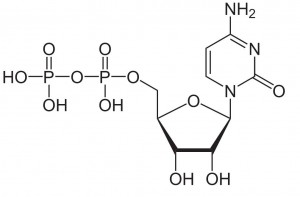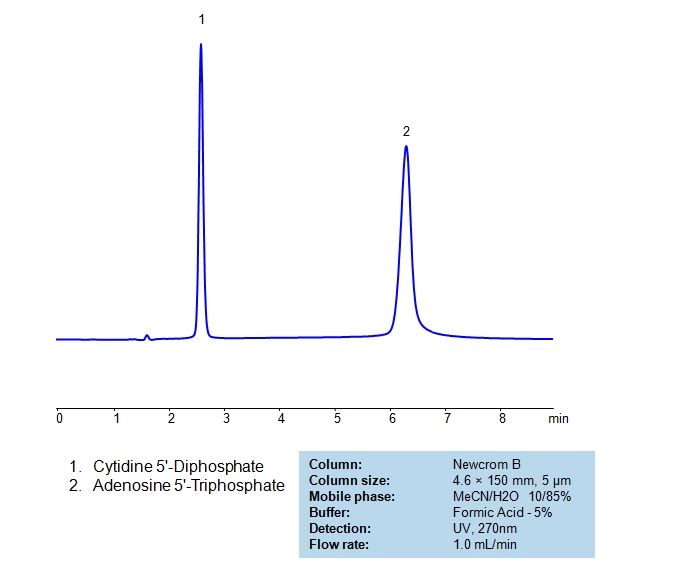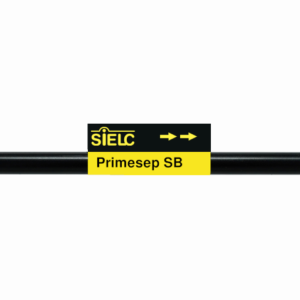| CAS Number | 63-38-7 |
|---|---|
| Molecular Formula | C9H15N3O11P2 |
| Molecular Weight | 403.177 |
| InChI Key | ZWIADYZPOWUWEW-XVFCMESISA-N |
| LogP | -4.5 |
| Synonyms |
|
Applications:
HPLC Separation of Cytidine-5′-diphosphate (CDP) and Adenosine 5′-Triphosphate (ATP) on Newcrom B Column
October 28, 2019
HPLC Method for Adenosine Triphosphate, Cytidine Diphosphate on Newcrom B by SIELC Technologies
High Performance Liquid Chromatography (HPLC) Method for Analysis of Adenosine Triphosphate, Cytidine Diphosphate .
Cytidine-5′-diphosphate is a nucleoside diphosphate with C9H15N3O11P2 chemical formula. It is used by RNA and DNA to draw upon it for building blocks. It is a precursor to cytidine triphosphate.
Adenosine 5′-Triphosphate is a nucleotide with the chemical formula C10H16N5O13P3. It is referred to as “energy currency” of the cell due to it’s importance in cellular energy metabolism. It is generated in the mitochondria and is used in numerous various cellular processes.
Adenosine Triphosphate, Cytidine Diphosphate can be retained and analyzed using the Newcrom B stationary phase column. The analysis utilizes an isocratic method with a simple mobile phase consisting of water and acetonitrile (MeCN) with a formic acid buffer. Detection is performed using UV.
| Column | Newcrom B, 4.6 x 150 mm, 5 µm, 100 A, dual ended |
| Mobile Phase | MeCN/H2O – 10/85% |
| Buffer | Formic Acid – 5% |
| Flow Rate | 1.0 ml/min |
| Detection | UV 270nm |
| Class of Compounds | Acid, Hydrophilic, Ionizable |
| Analyzing Compounds | Adenosine Triphosphate, Cytidine Diphosphate |
Application Column
Newcrom B
Column Diameter: 4.6 mm
Column Length: 150 mm
Particle Size: 5 µm
Pore Size: 100 A
Column options: dual ended
Cytidine Diphosphate

Separation of Nine Nucleotides by Mixed-Mode Chromatography
July 6, 2015
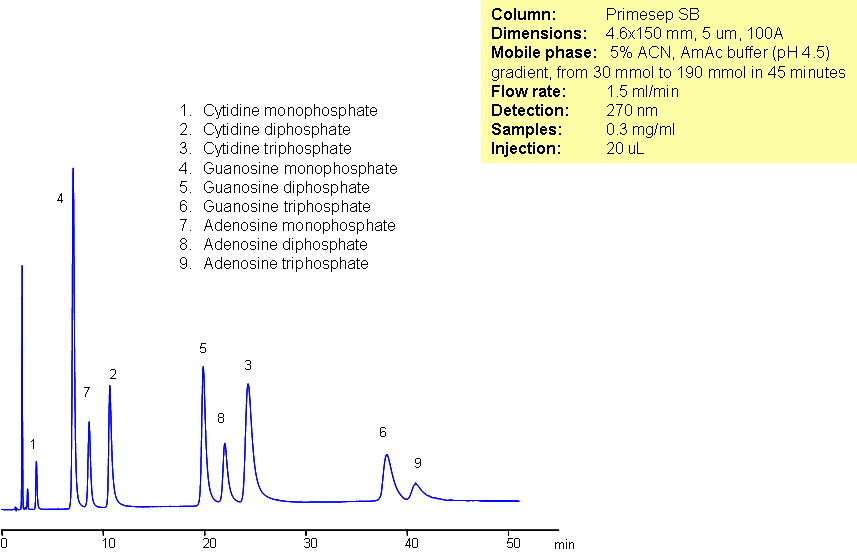
Nucleotides are important biological molecules which serve as subunits of nucleic acids. They are composed of a five-carbon sugar, a nitrogenous base, and at least one phosphate group. Nucleotides cannot be retained by reverse-phase chromatography without an ion-pairing reagent due to their highly polar nature. Primesep SB is capable of retaining and separating nine nucleotides. Primesep SB is a reverse-phase column with strong embedded basic ion-pairing groups.
Application Column
Primesep SB
The Primesep family of mixed-mode columns offers a wide variety of stationary phases, boasting unprecedented selectivity in the separation of a broad array of chemical compounds across multiple applications. Corresponding Primesep guard columns, available with all stationary phases, do not require holders. SIELC provides a method development service available to all customers. Inquire about our specially-tailored custom LC-phases for specific separations.
Select optionsAdenosine Monophosphate
Adenosine Triphosphate
Cytidine Diphosphate
Cytidine Monophosphate
Cytidine Triphosphate
Guanosine Diphosphate
Guanosine Monophosphate
Guanosine Triphosphate

HPLC Separation of Cytidines
November 21, 2010
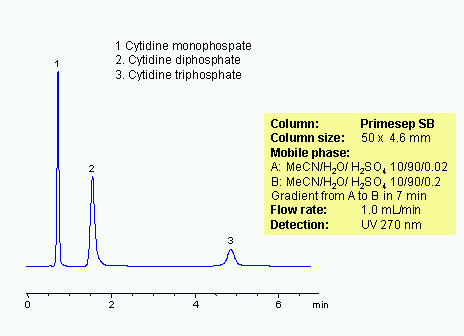
Cytidine phosphates are nucleotides. Nucleotides contain a nucleobase, five-carbon sugar and one or three phosphate groups. All three cytidines are very polar and cannot be retained by reversed-phase chromatography without a ion-pairing reagent. Mixed-mode Primesep SB column easily allows to retain and separate mono-, di-, and tri-phospates by anion-exchange mechanism. Other nucleotides can be separated as well by this approach. Nucleotides in biofluids can be analyzed directly on this column without any significant sample preparation. Most of the proteins from biological fluids will be repelled from the surface of silica gel. Method is compatible with UV, ELSD, CAD and LC/MS.
Application Column
Primesep SB
The Primesep family of mixed-mode columns offers a wide variety of stationary phases, boasting unprecedented selectivity in the separation of a broad array of chemical compounds across multiple applications. Corresponding Primesep guard columns, available with all stationary phases, do not require holders. SIELC provides a method development service available to all customers. Inquire about our specially-tailored custom LC-phases for specific separations.
Select optionsCytidine Monophosphate
Cytidine Triphosphate

